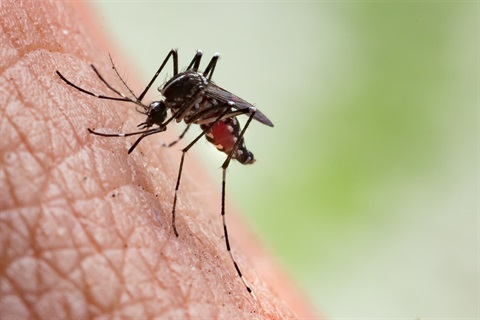
Campaspe Shire Council encourages flood affected residents to be vigilant against mosquito-borne diseases and mould, as recent flooding and warm weather creates an ideal breeding environment for both.
Mayor, Cr Rob Amos said Council’s Public Health team have been on the ground administering mosquito treatments post flood, across the municipality as required.
“The team have been out last week treating mosquito dense areas in Rochester and Echuca to help prevent disease in our communities.
“As we know, mosquitos gather around stagnant water and can carry diseases which can be passed onto people through mosquito bites, including Ross River virus, Barmah Forest virus, Murray Valley encephalitis, Japanese encephalitis and Kunjin virus,” Cr Amos said.
Some tips to prevent getting bitten and breeding sites on your property:
- Tip water out of pots, plant-saucers, play equipment and other containers in your yard
- Remove any debris in the yard that collects water, including old tyres, cans and palm fronds.
- Remove pools of standing water by clearing debris or digging small channels to assist drainage.
- Check for damaged fly screens on windows, doors and vents. If required, repair or install new screens. Mosquito-zappers or coils will also deter mosquitos around the home.
“If residents are still concerned, its recommended to wear long sleeve clothing, using a repellent that contains DEET (diethyltoluamide) or picaridin, and avoid being outside during dusk and dawn.
“Flood affected residents should also be vigilant about mould developing in their homes. Mould grows in damp, poorly ventilated areas and humid conditions, and can appear like fuzz, a stain, smudge or discoloration.
“Mould found in damp structures can trigger nasal congestion, sneezing, cough, wheeze, respiratory infections and worsen asthma and allergic reactions. People with weakened immune systems, allergies, severe asthma and lung diseases should seek advice from their medical practitioner,” Cr Amos added.
Some actions residents can take to reduce mould in the home include:
- Fixing any leaks in plumbing, roofs and other building faults.
- Ensuring gutters are cleared and well maintained.
- Reduce condensation by using exhaust fans, or opening windows in the bathroom and kitchen when using these areas.
- Wipe excess water caused by condensation on windows or showers.
- Air the home regularly by opening windows and doors on warmer days.
- Use reverse cycle air conditioning and a mechanical dehumidification if available.
- Vent clothes dryer to the outside and clean lint filters regularly. Ensure sufficient exhaust openings to the outside of the home if you use evaporative cooling. Evaporative coolers increase the moisture content in indoor air, follow the instruction manual to ensure sufficient airflow in the home.
- Service/maintain heating, ventilation and colling systems.
- Use a vacuum cleaner with high efficiency particulate air filter (HEPA).
- Avoid placing your mattresses on the floor or surfaces without adequate ventilation.
- Vacuum and/or turn mattresses if it can be done safely.
- Increase air circulation around furniture and move furniture away from walls.
“If you suspect mould contamination in your home but can’t find its origin, residents can engage an occupational hygienist or environmental health and safety professional to conduct testing for a fee.
“If you do have mould in your home, discuss it with your insurance company and take measures to keep yourself safe and healthy,” Cr Amos said.








